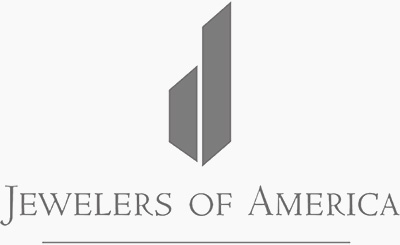“I do not believe you can do today’s job with yesterday’s methods and be in business tomorrow.”- Horatio Nelson Jackson, American Physician and Automobile Pioneer
At La Bijouterie, we believe in innovation, as it’s the key to success in almost any industry. When Lab Grown Diamonds (LGD) joined the greater diamond discussion a few years ago, we knew it was time to start educating our customers in new ways, and share the depth of knowledge we have about the diamond industry as a whole. It was time to focus on the future. Because of this, we have an obligation to be upfront and factual in the information we share, and present it in a way that is unbiased and educational as it relates to Lab Grown vs Real Diamonds.
Educating our clients brought up many questions, but one in particular we feel is worth a longer explanation...
What place does a lab made diamond have in the future, especially compared to real, naturally occurring diamonds?
Our hope is this blog post will be part of that greater conversation for you. Know that the best way to find out the answer to this question is to book a virtual or in-person 1:1 appointment to further the discussion in order to make your own educated decision. Then you will have the opportunity to ask as many questions as you’d like.
What is a Lab Grown Diamond (LGD)?
A lab-grown diamond is a man-made product that shares the chemical and optical properties of natural diamonds, but whose origin and value differ greatly. Lab-grown diamonds are produced in factories in approximately 2-3 weeks using one of two methods originally developed in the 1960s for industrial purposes – HPHT and CVD. These methods artificially replicate natural conditions found in the Earth, forcing carbon atoms into a crystal structure. In more recent years, technology improvements have allowed factories to produce lab-grown diamonds in qualities that allow for uses beyond industrial. (Source)
So Are LGDs Actual Diamonds?
Although their chemical structure is the same as a natural diamond, according to the Federal Trade Commission (FTC) a lab-created diamond cannot be called “real” because it does not come from the Earth and it is not a gemstone. (Source)
By this point, you may be feeling confused. How are you supposed to make a decision on whether to move forward with a naturally occurring diamond, (and which one?) vs one that is Lab Grown? Why is the word diamond in the title if they are not in fact diamonds? Do real diamonds hold their value? What about pricing? The environment?
Other Expert Opinions
In trying to differentiate natural diamonds from the lab grown alternative, the Natural Diamond Council quite truthfully underscores natural diamonds rarity.
“Natural diamonds are finite and rare. Diamonds are becoming rarer every day because no new significant deposits have been discovered in about 30 years,” it states. “However, lab-grown diamonds can be manufactured in potentially unlimited quantities similar to any manufactured product, thus they are not finite and cannot be considered rare.”
To which, the NDC adds, “Natural diamonds obtain their value from their scarcity as a natural, billion-year-old precious gem and have shown over decades to grow in value as they become more rare.”
There are a lot of things to consider here, and we’ve found one of the most important things to consider is Price vs Value.
Price vs Value
In its 2019 report, Bain gave more specifics, noting the lab-grown market grew 15% to 20% in 2019, following a similar trajectory in 2018.
That increase is credited to “the widening price differential of lab-grown diamonds versus natural ones and campaigns that leveraged the ‘green’ benefits of manufactured stones,” the report states. (Source)
When it comes to value, you can’t put a price on rarity. As basic economics states, once demand goes up, and inventory goes down, price goes up. So where does this leave us, as each claim they are better than the other for different reasons? More importantly, where does the future of Lab Grown Diamonds lie? Well that answer is entirely up to you as the consumer.
At La Bijouterie, our sole purpose is to help couples achieve a milestone moment in their lives any way we can. We believe in quality over quantity, and educating always. Before pulling the trigger on such an important decision, book a no stress 30 minute 1:1 appointment.
At Your Service,
Set F.
Founder, La Bijouterie





